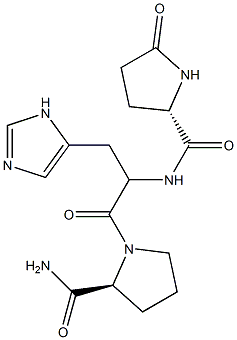| Description | Holo-transferrin is the transferrin of the holo iron. It is a kind of iron-binding blood plasmaglycoproteins that is capable of regulating the level of free iron (Fe) in biological fluids. It is responsible for iron transportation in vertebrate serum and donating irons to cells through interaction with the CD71 membrane receptor. Transferrin is crucial for proliferating cells as a growth factor to initiate and maintain the DNA synthesis. It can also act as a cytokine. It is mainly synthesized in liver inside the human body. It is responsible to deliver iron from duodenum and white blood cells macrophages to all the other tissues, and is a key protein to maintain in vivo iron homeostasis. Increased plasma transferrin level is related to diseases such as iron deficiency anemia while decrease plasma transferrin is related to iron overload diseases and protein malnutrition. |
| Uses | All cells require iron for the proper uptake of oxygen from their environment. Transferrin, a protein isolated from serum, causes the uptake and transport of iron from culture medium to the cells. This allows proper oxygen uptake and also stimulates growth-related enzyme activity. Iron-saturated transferrin (holo transferrin) is continually recycled after releasing iron and becomes iron-deficient transferrin (apo-transferrin). Choosing which form to use depends upon the culture conditions. In media such as Dulbecco′s Modified Eagle′s Medium/Ham′s Nutrient Mixture F12 (DMEM/F12) that contain high levels of iron salt, using apo-transferrin is preferred. |
| Uses | Transferrin is the primary iron binding and cell delivery molecule present in serum. Serum-free cell culture systems require a delivery format for iron. Transferrin is the preferential delivery form of iron because cells process transferrin bound iron in a physiologically appropriate way through transferrin receptors on the cell surface. Human holo-transferrin is a high affinity transferrin that can be used with a wide range of cells types. Human holo-transferrin is loaded with iron prior to use and can be added directly to iron poor or iron-free cell culture media. |
| Uses | Transferrin (Holo) is the primary iron binding and cell delivery molecule present in serum. Serum-free cell culture systems require a delivery format for iron. It is the preferential delivery form of iron because cells process transferrin bound iron in a physiologically appropriate way through transferrin receptors on the cell surface. It can be used with a wide range of cells types. It is loaded with iron prior to use and can be added directly to iron poor or iron-free cell culture media. It has been used for study in treatment of breast cancer cells with holo-transferrin in combination with dihydroartemisinin results in increased tumor cell death due to elevated levels of intracellular ferrous iron. |
| Definition | ChEBI: Protirelin is a tripeptide composed of L-pyroglutamyl, L-histidyl and L-prolinamide residues joined in sequence. It has a role as a human metabolite. It is a peptide hormone and a tripeptide. |
| General Description | Transferrin is an 80 kDa serum glycoprotein, which has an half-life of 8 to 10 days. The gene is located on human chromosome 3q22.1. Transferrin is expressed in hepatocytes. |
| Pharmaceutical Applications | Transferrins are a group of proteins that are abundant in blood and their primary role is to transport Fe3+, as free Fe3+ would be toxic to most organisms. Transferrin consists of a single polypeptide chain independently binding a maximum of two Fe3+ ions. Fe3+ is bound in a hexa-coordinated high-spin complex within the protein. The metal is coordinated by the N atom from the imidazole residue, two deprotonated phenol groups, a carboxylate and a carbonato ligand. |
| Biochem/physiol Actions | Studies have shown that co-treatment of breast cancer cells with holo-transferrin, which increases iron levels within cells and derivatives of artemisinin results in increased cell death. |
| Purification Methods | This transferrin is purified by affinity chromatography on phenyl-boronate agarose followed by DEAE-Sephacel chromatography. The product is free from haemopexin. [Cook et al. Anal Biochem 149 349 1985, Aisen & Listowsky Ann Rev Biochem 49 357 1980.] |
| References | https://en.wikipedia.org/wiki/Transferrin
http://www.prospecbio.com/Holo_Transferrin_Human_11_121/ |
